Delta Airlines 2012 Annual Report Download - page 12
Download and view the complete annual report
Please find page 12 of the 2012 Delta Airlines annual report below. You can navigate through the pages in the report by either clicking on the pages listed below, or by using the keyword search tool below to find specific information within the annual report.-
 1
1 -
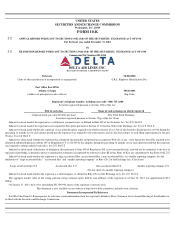 2
2 -
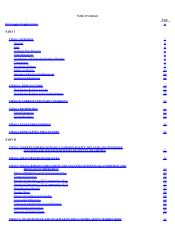 3
3 -
 4
4 -
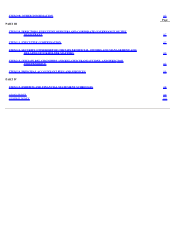 5
5 -
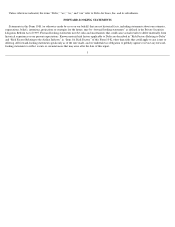 6
6 -
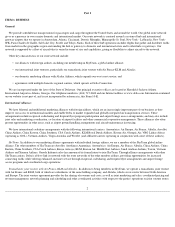 7
7 -
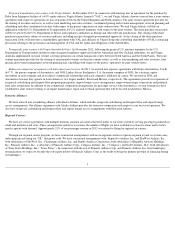 8
8 -
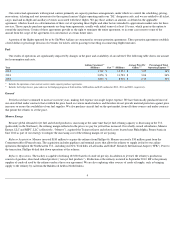 9
9 -
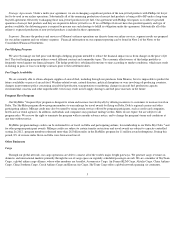 10
10 -
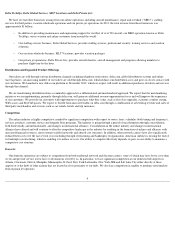 11
11 -
 12
12 -
 13
13 -
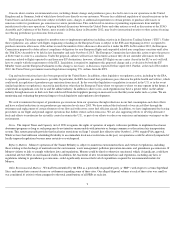 14
14 -
 15
15 -
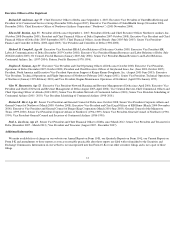 16
16 -
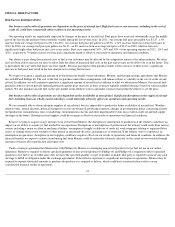 17
17 -
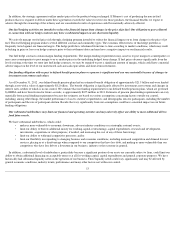 18
18 -
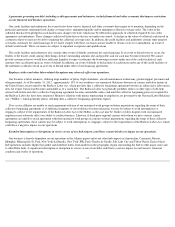 19
19 -
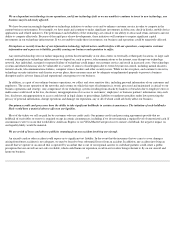 20
20 -
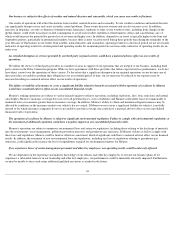 21
21 -
 22
22 -
 23
23 -
 24
24 -
 25
25 -
 26
26 -
 27
27 -
 28
28 -
 29
29 -
 30
30 -
 31
31 -
 32
32 -
 33
33 -
 34
34 -
 35
35 -
 36
36 -
 37
37 -
 38
38 -
 39
39 -
 40
40 -
 41
41 -
 42
42 -
 43
43 -
 44
44 -
 45
45 -
 46
46 -
 47
47 -
 48
48 -
 49
49 -
 50
50 -
 51
51 -
 52
52 -
 53
53 -
 54
54 -
 55
55 -
 56
56 -
 57
57 -
 58
58 -
 59
59 -
 60
60 -
 61
61 -
 62
62 -
 63
63 -
 64
64 -
 65
65 -
 66
66 -
 67
67 -
 68
68 -
 69
69 -
 70
70 -
 71
71 -
 72
72 -
 73
73 -
 74
74 -
 75
75 -
 76
76 -
 77
77 -
 78
78 -
 79
79 -
 80
80 -
 81
81 -
 82
82 -
 83
83 -
 84
84 -
 85
85 -
 86
86 -
 87
87 -
 88
88 -
 89
89 -
 90
90 -
 91
91 -
 92
92 -
 93
93 -
 94
94 -
 95
95 -
 96
96 -
 97
97 -
 98
98 -
 99
99 -
 100
100 -
 101
101 -
 102
102 -
 103
103 -
 104
104 -
 105
105 -
 106
106 -
 107
107 -
 108
108 -
 109
109 -
 110
110 -
 111
111 -
 112
112 -
 113
113 -
 114
114 -
 115
115 -
 116
116 -
 117
117 -
 118
118 -
 119
119 -
 120
120 -
 121
121 -
 122
122 -
 123
123 -
 124
124 -
 125
125 -
 126
126 -
 127
127 -
 128
128 -
 129
129 -
 130
130 -
 131
131 -
 132
132 -
 133
133 -
 134
134 -
 135
135 -
 136
136 -
 137
137 -
 138
138 -
 139
139 -
 140
140 -
 141
141 -
 142
142 -
 143
143 -
 144
144 -
 145
145 -
 146
146 -
 147
147 -
 148
148 -
 149
149 -
 150
150 -
 151
151 -
 152
152 -
 153
153 -
 154
154 -
 155
155 -
 156
156 -
 157
157 -
 158
158 -
 159
159 -
 160
160 -
 161
161 -
 162
162 -
 163
163 -
 164
164 -
 165
165 -
 166
166 -
 167
167 -
 168
168 -
 169
169 -
 170
170 -
 171
171 -
 172
172 -
 173
173 -
 174
174 -
 175
175 -
 176
176 -
 177
177 -
 178
178 -
 179
179 -
 180
180 -
 181
181 -
 182
182 -
 183
183 -
 184
184 -
 185
185 -
 186
186 -
 187
187 -
 188
188 -
 189
189 -
 190
190 -
 191
191 -
 192
192 -
 193
193 -
 194
194 -
 195
195 -
 196
196 -
 197
197 -
 198
198 -
 199
199 -
 200
200 -
 201
201 -
 202
202 -
 203
203 -
 204
204 -
 205
205 -
 206
206 -
 207
207 -
 208
208 -
 209
209 -
 210
210 -
 211
211 -
 212
212 -
 213
213 -
 214
214 -
 215
215 -
 216
216 -
 217
217 -
 218
218 -
 219
219 -
 220
220 -
 221
221 -
 222
222 -
 223
223 -
 224
224 -
 225
225 -
 226
226 -
 227
227 -
 228
228 -
 229
229 -
 230
230 -
 231
231 -
 232
232 -
 233
233 -
 234
234 -
 235
235 -
 236
236 -
 237
237 -
 238
238 -
 239
239 -
 240
240 -
 241
241 -
 242
242 -
 243
243 -
 244
244 -
 245
245 -
 246
246 -
 247
247 -
 248
248 -
 249
249 -
 250
250 -
 251
251 -
 252
252 -
 253
253 -
 254
254 -
 255
255 -
 256
256 -
 257
257 -
 258
258 -
 259
259 -
 260
260 -
 261
261 -
 262
262 -
 263
263 -
 264
264 -
 265
265 -
 266
266 -
 267
267 -
 268
268 -
 269
269 -
 270
270 -
 271
271 -
 272
272 -
 273
273 -
 274
274 -
 275
275 -
 276
276 -
 277
277 -
 278
278 -
 279
279 -
 280
280 -
 281
281 -
 282
282 -
 283
283 -
 284
284 -
 285
285 -
 286
286 -
 287
287 -
 288
288 -
 289
289 -
 290
290 -
 291
291 -
 292
292 -
 293
293 -
 294
294 -
 295
295 -
 296
296 -
 297
297 -
 298
298 -
 299
299 -
 300
300 -
 301
301 -
 302
302 -
 303
303 -
 304
304 -
 305
305 -
 306
306 -
 307
307 -
 308
308 -
 309
309 -
 310
310 -
 311
311 -
 312
312 -
 313
313 -
 314
314 -
 315
315 -
 316
316 -
 317
317 -
 318
318 -
 319
319 -
 320
320 -
 321
321 -
 322
322 -
 323
323 -
 324
324 -
 325
325 -
 326
326 -
 327
327 -
 328
328 -
 329
329 -
 330
330 -
 331
331 -
 332
332 -
 333
333 -
 334
334 -
 335
335 -
 336
336 -
 337
337 -
 338
338 -
 339
339 -
 340
340 -
 341
341 -
 342
342 -
 343
343 -
 344
344 -
 345
345 -
 346
346 -
 347
347 -
 348
348 -
 349
349 -
 350
350 -
 351
351 -
 352
352 -
 353
353 -
 354
354 -
 355
355 -
 356
356 -
 357
357 -
 358
358 -
 359
359 -
 360
360 -
 361
361 -
 362
362 -
 363
363 -
 364
364 -
 365
365 -
 366
366 -
 367
367 -
 368
368 -
 369
369 -
 370
370 -
 371
371 -
 372
372 -
 373
373 -
 374
374 -
 375
375 -
 376
376 -
 377
377 -
 378
378 -
 379
379 -
 380
380 -
 381
381 -
 382
382 -
 383
383 -
 384
384 -
 385
385 -
 386
386 -
 387
387 -
 388
388 -
 389
389 -
 390
390 -
 391
391 -
 392
392 -
 393
393 -
 394
394 -
 395
395 -
 396
396 -
 397
397 -
 398
398 -
 399
399 -
 400
400 -
 401
401 -
 402
402 -
 403
403 -
 404
404 -
 405
405 -
 406
406 -
 407
407 -
 408
408 -
 409
409 -
 410
410 -
 411
411 -
 412
412 -
 413
413 -
 414
414 -
 415
415 -
 416
416 -
 417
417 -
 418
418 -
 419
419 -
 420
420 -
 421
421 -
 422
422 -
 423
423 -
 424
424
 |
 |

International
Our international operations are subject to competition from both domestic and foreign carriers. Through alliance and other marketing and
codesharing agreements with foreign carriers, U.S. carriers have increased their ability to sell international transportation, such as services to and
beyond traditional European and Asian gateway cities. Similarly, foreign carriers have obtained increased access to interior U.S. passenger traffic
beyond traditional U.S. gateway cities through these relationships. In particular, alliances formed by domestic and foreign carriers, including
SkyTeam, the Star Alliance (among United Airlines, Lufthansa German Airlines, Air Canada, All Nippon Airways and others) and the oneworld
alliance (among American Airlines, British Airways, Iberia, Qantas and others) have significantly increased competition in international markets.
Increased competition has also emerged from well-funded carriers in the Gulf region, including Emirates, Etihad and Qatar. These carriers have
large numbers of international widebody aircraft on order and are increasing service to the United States from their hubs in the Middle East. Several
of these carriers, along with carriers from China, India and Latin America, are government supported or funded, which has allowed them to grow
quickly, reinvest in their product and expand their global presence at the expense of U.S. airlines. In addition, the adoption of liberalized Open Skies
Aviation Agreements with an increasing number of countries around the world, including in particular the Open Skies Treaties that the U.S. has with
the Member States of the European Union, Japan and the Gulf states, could significantly increase competition among carriers serving those markets.
Several joint ventures among U.S. and foreign carriers, including our transatlantic joint venture with Air France-KLM and Alitalia and our
transpacific joint venture with Virgin Australia, have received grants of antitrust immunity allowing the participating carriers to coordinate schedules,
pricing, sales and inventory. Other joint ventures that have received anti-trust immunity include a transatlantic alliance among United, Air Canada
and Lufthansa, a transpacific joint venture among United and All Nippon Airways, a transatlantic joint venture among American, British Airways
and Iberia and a transpacific joint venture between American and Japan Air Lines.
Regulatory Matters
The Department of Transportation (“DOT”) and the Federal Aviation Administration (the “FAA”) exercise regulatory authority over air
transportation in the U.S. The DOT has authority to issue certificates of public convenience and necessity required for airlines to provide domestic air
transportation. An air carrier that the DOT finds fit to operate is given authority to operate domestic and international air transportation (including the
carriage of passengers and cargo). Except for constraints imposed by regulations regarding “Essential Air Services,” which are applicable to certain
small communities, airlines may terminate service to a city without restriction.
The DOT has jurisdiction over certain economic and consumer protection matters, such as unfair or deceptive practices and methods of
competition, advertising, denied boarding compensation, baggage liability and disabled passenger transportation. The DOT also has authority to
review certain joint venture agreements between major carriers and engages in regulation of economic matters such as slot transactions. The FAA has
primary responsibility for matters relating to the safety of air carrier flight operations, including airline operating certificates, control of navigable air
space, flight personnel, aircraft certification and maintenance and other matters affecting air safety.
Authority to operate international routes and international codesharing arrangements is regulated by the DOT and by the governments of the
foreign countries involved. International certificate authorities are also subject to the approval of the U.S. President for conformance with national
defense and foreign policy objectives.
The Transportation Security Administration and the U.S. Customs and Border Protection, each a division of the Department of Homeland
Security, are responsible for certain civil aviation security matters, including passenger and baggage screening at U.S. airports and international
passenger prescreening prior to entry into or departure from the U.S.
Airlines are also subject to various other federal, state, local and foreign laws and regulations. For example, the U.S. Department of Justice has
jurisdiction over airline competition matters. The U.S. Postal Service has authority over certain aspects of the transportation of mail. Labor relations
in the airline industry, as discussed below, are generally governed by the Railway Labor Act. Environmental matters are regulated by various federal,
state, local and foreign governmental entities. Privacy of passenger and employee data is regulated by domestic and foreign laws and regulations.
7
